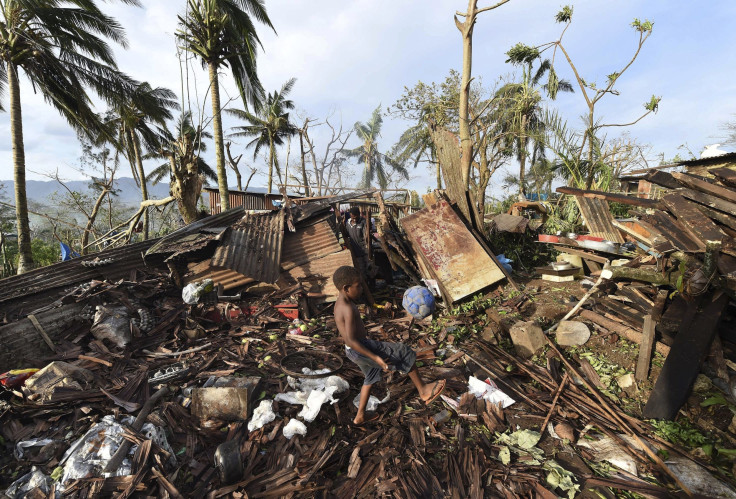Cyclone Pam Vanuatu Update: Widespread Homelessness, Damage, But Death Count Lower Than Originally Feared

At least 3,300 people were left homeless Tuesday in Vanuatu after Cyclone Pam devastated the South Pacific island nation over the weekend. Many residents sought refuge inside sturdy buildings such as schools and churches, resulting in a much lower death toll than was originally feared.
The storm's 185 mph winds impacted the local infrastructure and destroyed forests and transport access points such as airstrips, impeding rescue efforts. "The aerial reconnaissance flights confirmed significant damage in the southern islands, particularly Tanna island, where it appears that more than 80 percent of houses and buildings have been partially or completely destroyed," Australian Foreign Minister Julie Bishop told reporters in Canberra, according to Reuters.
Dwindling rations presented another pressing problem for survivors. "People sheltered in school buildings. We were helping one another.... We are running short of food, water, shelter and electricity," Ropate Vuso, 67, told Reuters in Tanna township in Vanuatu’s south. "We have no communications, we are still waiting for the people from parliament, the chief and the president, but still nobody is coming."
The United Nations originally reported 24 deaths from the three islands -- Efate, Tafea and Tanna -- that were accessible Monday in the storm’s aftermath, but the number was revised to 11 the next day. Rescue teams expected the number of casualties to climb, however, as more of the nation’s outlying islands become accessible.
Getting to these islands was not easy. "There are difficulties in understanding how large a plane can land on some islands. In many of these small islands, they don't have ports that can handle large vessels. In some places we may need to construct landing places for planes and boats," said Aurelia Balpe, head of the International Federation of Red Cross and Red Crescent Societies for the Pacific, according to BBC. Aid agencies have organized themselves into clusters to expedite help and have been liaising with the government to plan delivering aid amid challenges.
Australia has already sent five planes with personnel and humanitarian supplies and dispatched another three planes Tuesday. It has also sent an emergency response ship capable of making beach landings. A French navy ship from nearby New Caledonia and a U.S. Marine Corps-based humanitarian assistance and disaster relief team was also mobilized to help with the situation.
While shops were open and selling canned goods in the capital city Port Vila, many locals did not have the money to buy them. "We have water, but the situation is very bad because people don't have local food," shop owner Colette Calvo told Reuters. "All they can eat is food like bananas that they pick up off the ground, and they can get sick." Access to clean water was also problematic. "We urgently need water purification tablets to make sure that the water is safe to drink," Alice Clements of Unicef told the BBC.
Vanuatu, a chain of 83 islands, has some 260,000 inhabitants across 65 islands. About 47,000 people live in the capital. The cyclone has devastated the country’s tourism industry, which accounts for about 40 percent of Vanuatu’s economy, with Port Vila’s cruise liner piers closed indefinitely. The storm’s strength has been compared to Typhoon Haiyan, which hit the Philippines in 2013 and killed more than 6,000 people.
© Copyright IBTimes 2024. All rights reserved.












